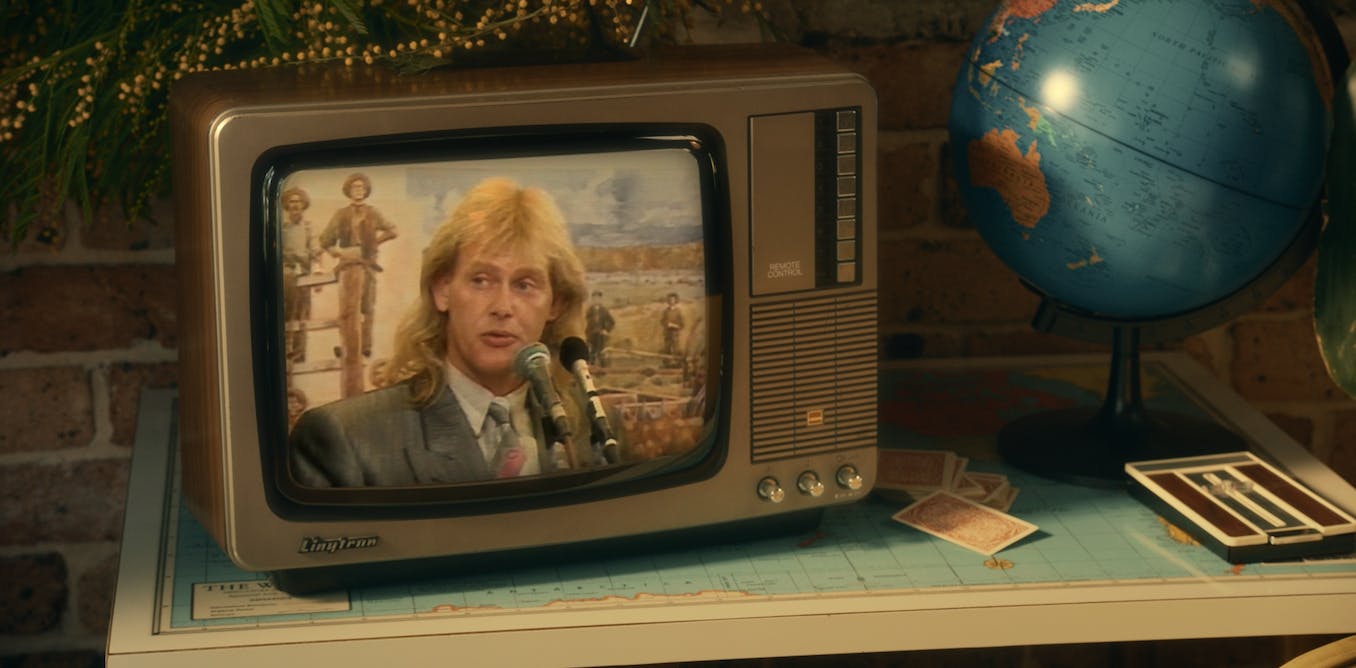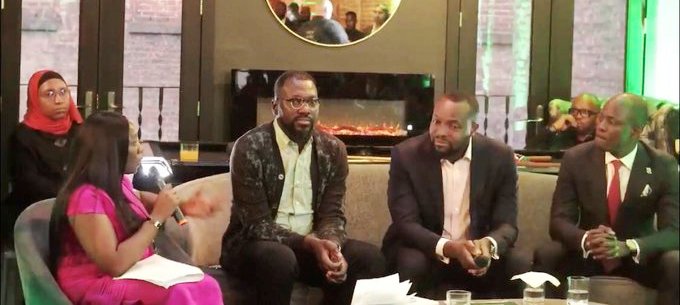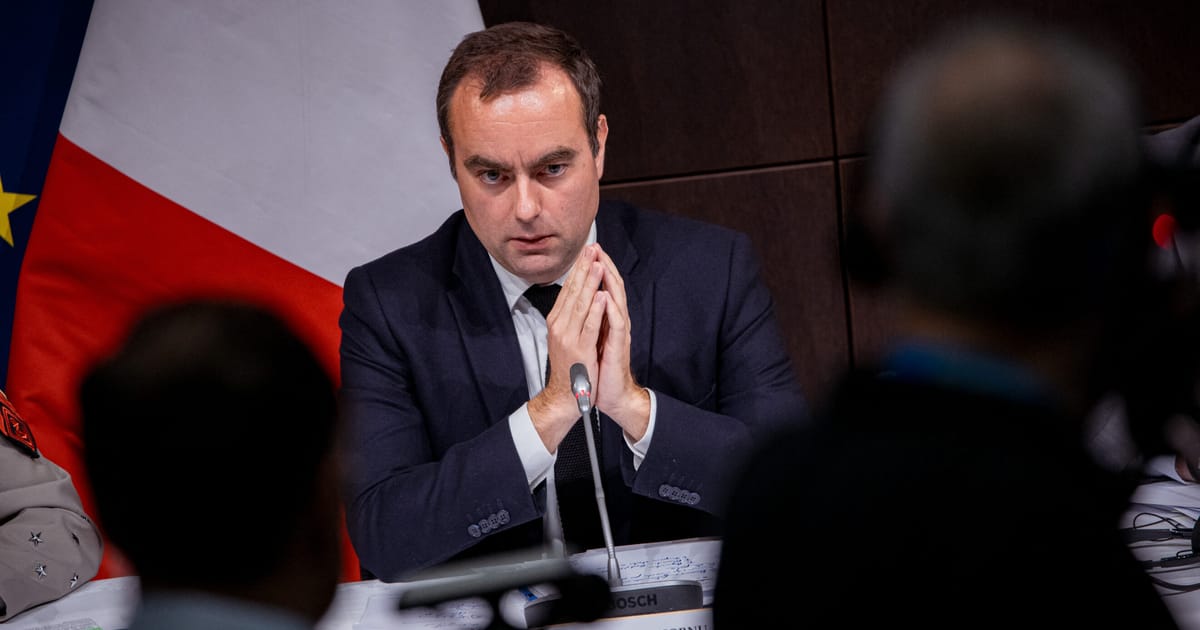The serendipity of the pairing between John Farnham’s 1986 hit single You’re the Voice and the Voice to Parliament referendum is obvious, but it goes well beyond the fact the two share the key word “voice”.
The original was composed by a team of British songwriters in response to an anti-nuclear demonstration in London’s Hyde Park in 1985. Chris Thompson, Andy Qunta and Maggie Ryder had planned a song-writing session on the day an estimated 100,000 marched through central London in support the Campaign for Nuclear Disarmament.
Thompson, however, overslept. As an act of self-admonishment he decided to express his remorse by conceiving a song that emphasised the importance of personal agency in achieving political change.
This is the kernel of meaning in You’re the Voice. It is also what makes it so especially well suited to support a campaign about a referendum to give Indigenous Australians a constitutionally recognised Voice to Parliament nearly 40 years later.
The Voice to Parliament explained
The grain of Farnham’s voice
Thompson was not at all convinced at the time Farnham could do the song justice when he requested it for inclusion in his album Whispering Jack.
And yet the particular qualities of Farnham’s singing is also arguably crucial to the song’s success, then and now.
The music’s combination of power ballad tempo with pub anthem singability calls for a kind of full-throated vocal performance that takes more than a little inspiration from African American gospel traditions.
Singers drawn from these traditions include giants of popular musical culture like James Brown, Tina Turner and Aretha Franklin. It is not exaggerated praise to suggest Farnham here delivers a performance that stands with their best.
And it was career changing for him, helping Farnham to put to rest his earlier image as a clean-cut purveyor of sentimental pop songs like Sadie the Cleaning Lady and relaunch his career.
Farnham’s singing here exemplifies what Roland Barthes famously described in an essay from 1972 as the “grain of the voice”: the element of a singer’s individuality which helps convey the sincerity and authenticity of what is being sung.
You’re the Voice further highlights the grain of Farnham’s singing via the exclamation “oh, whoa!” regularly punctuating the song’s chorus. In a powerful moment of sonic symbolism, the exclamation is eventually taken up in the advertisement (like the sentiment of the song itself, it is no doubt hoped) by a chorus of supporters.
You are the voice
Indeed, if it is to succeed, the referendum will need to convince an especially broad coalition of Australians to vote for “yes”.
The song supports this goal from its very title: you are the voice. It asks each of us, individually, to consider how we can act for the common good.
We have the chance to turn the pages over
We can write what we want to write
We gotta make ends meet, before we get much older.
The song’s explicit call to action has now been connected to the forthcoming referendum: now is the moment to use your voice at the ballot box to give, in turn, a constitutionally enshrined voice to indigenous Australians.
The “yes” campaign’s appeal to collective responsibility is one aspect of the referendum process that concerns some Indigenous critics. The very enterprise of constitutional reform, after all, presumes the legitimacy of the Australian constitution which in turn presumes the legitimacy of the original act of colonial dispossession.
But the bigger threat to the “yes” campaign arguably comes from those who see the idea of an Indigenous voice to parliament itself as divisive.
Yet, as the song goes:
This time, we know we all can stand together
With the power to be powerful
Believing we can make it better.
The use of You’re the Voice here reinforces the view that supporting the Voice to Parliament is a positive act of national reconciliation that we, as a nation, can take together.
It is an injunction to take personal and collective responsibility for the history and character of the country we all share.
Politically inclusive
The advertisement is the work of Mark Green of The Monkeys advertising agency and historian Clare Wright.
It focuses on a family as they watch key moments which shaped Australia’s collective identity. It looks at key moments of reconciliation, Indigenous achievement and Indigenous protest; but also broader moments in collective action.
In a particularly astute move, the advertisement overlays images of John Howard’s 1996 gun reforms in the wake of the Port Arthur massacre as Farnham delivers the lines:
We’re all someone’s daughter
We’re all someone’s son
How long can we look at each other
Down the barrel of a gun?
Implicit in this conjunction is a reminder to us that support for the “yes” vote, like any nation-changing political act, can come from any side of politics.
Democratising the message
There are many more layers we could tease apart in You’re The Voice. Its extended bagpipes solo originated as an homage to AC/DC singer Bon Scott, connecting it to the egalitarian, working class culture Scott’s music addresses.
Then there is the way the bagpipes, combined with the song’s use of side-drum rhythmic patterns, evoke the sound world of a military tattoo or march. This simultaneously elevates the register of its message. The song – and now the ad – is an implicit call to arms.
The inclusion of You’re the Voice in the “yes” campaign thus provides powerful support for its central message.
Farnham himself recognises this. Upon release of the advertisement, Farnham spoke about how, when it was first released in 1986, the song “changed his life”.
Generously, he concluded:
I can only hope that now it might help in some small way, to change the lives of our First Nations Peoples for the better.
Why the ‘yes’ campaign should embrace the politics of nationhood




